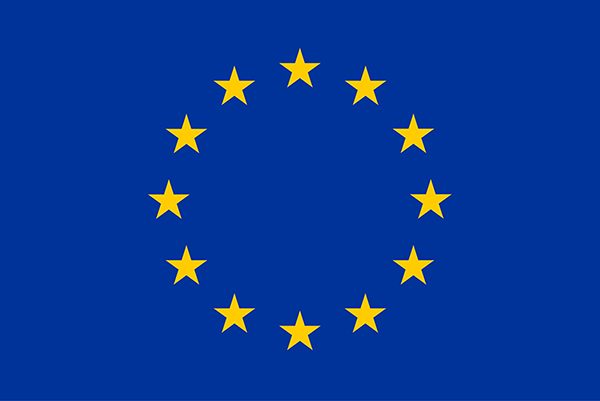MOTION
Making comfortable walking a normal experience for every child
Mechanised orthosis for children with neurological disorders
What
MOTION, Mechanised orthosis for children with neurological disorders, is an Interreg 2Seas project which aims to:
- Improve the quality of life of children with neurological disorders through advancements in development, validation and adoption of bionic rehabilitation technology.
- Facilitate knowledge and technology transfer from research to industry, healthcare professionals, end users and policy makers by setting up a transregional network.
Major outcomes of MOTION project are:
- A secure and autonomous bilateral lower limb exoskeleton and bilateral ankle foot orthoses to promote movement of children with neurological disorders
- A comfortable and functional smart garment that integrates sensing technology to monitor children while wearing the exoskeleton
MOTION brings together 15 partner organizations from 4 states in the 2 Seas region (Belgium, France, The Nederland’s and United Kingdom).
Within the MOTION project, Mobilab & Care is collaborating on an active ankle exoskeleton to help children with the neurological disorder CP walk more easily.
Goal
With this exoskeleton, we want to improve the quality of life for children with CP. CP stands for cerebral palsy and is a neurological disorder that impairs the coordination between the central nervous system and the muscles. As a result, children with CP often find it difficult to walk, and this issue is addressed with the MOTION project through the use and development of rehabilitation technology.
Relevance
Active exoskeletons for mobility rehabilitation already exist for adults, but such rehabilitation technologies are not yet readily available for children.
Children with CP exhibit a distinctive walking pattern due to their cerebral palsy: they walk on their tiptoes, their knees are somewhat bent, and they lack the strength to lift their feet off the ground while also experiencing balance issues. This altered walking style leads to musculoskeletal deformities over time, affecting their bones, tendons, joints, ligaments, muscles, nerves, and blood vessels. These deformities can result in mobility problems later in life.
Traditional ankle-foot orthoses (AFOs) currently on the market partially address these issues but restrict foot push-off. To facilitate foot push-off, Mobilab & Care has developed an active AFO with a motor that provides additional assistance to the muscles, making foot push-off easier.
The amount of force required varies from person to person, as do leg dimensions. This underscores the importance of personalizing each active AFO to ensure it fits snugly around the lower limb, avoiding friction or pressure in the wrong places.
Our role
In this project, Mobilab & Care leverages its expertise in orthopedic rehabilitation technology and 3D printing. Firstly, Mobilab & Care is responsible for developing the technology for the active AFO. Secondly, we conduct testing of the exoskeleton, first with healthy adults, then with healthy children, and finally with children with CP. Testing takes place both in Mobilab&Care's laboratory and in clinical settings, specifically at Pulderbos and UZ Pellenberg. Thirdly, we translate our knowledge and technology into clinical practice.
The initial phase involved studying the gait phases of a healthy individual, mapping what occurs during each phase of walking. Different phases include when the foot makes contact with the ground, when the foot lands on the ground, and when the foot pushes off, among others.
A detection system was employed to identify all these gait phases during different types of walking: normal walking, walking with an AFO, and simulated walking to mimic someone with CP. The latter involved the test subject walking on tiptoes and landing with a flat foot instead of the heel.
With this information about what the ankle does during each gait phase and the differences in gait phases between someone with and without impairments, further development took place. The goal is for the motor to recognize various phases and provide the appropriate amount of force during the corresponding phases. Thorough testing of this concept will take place in the near future.
Future
The research is still ongoing!
The active AFO can also be coupled with an exoskeleton around the hip and one around the knee. The development of these joints is taking place with our partners.
Funding
MOTION was granted within fifth call of Interreg 2Seas programme, Priority axis: technological and social innovation, Specific objective: technological innovation; total project budget is 7 476 119 € (ERDF amount: 4 431 376 €, ERDF rate: 59%). Project timeline: 03/01/2019 – 30/09/2022.
Researchers
Luiza Muraru
Curious about (bio)mechanical assessment of orthotics and prosthetics. Engaged in researching and implementing tailored and innovative solutions within orthopaedic technologies
Veerle Creylman
Loves to chat about orthoses, prosthetics and how to make them as optimal as possible, for every patient!
Roy Sevit
Passionate about using technology that supports humans and all their discomforts, creative and out-of-the-box!
Tom Saey
Passionate about automation of personalised 3D design, 3D scanning and 3D printing in healthcare applications.
Koen Janssens
Seeks to create a healthy body for all. Passionate about anatomy. Physiotherapist, coach, cook, and (forced) K3-lover
Daniel Morales
Passionate about design and mechanisms, will 3d scan you and make you an exoskeleton if you let him.
Partners




